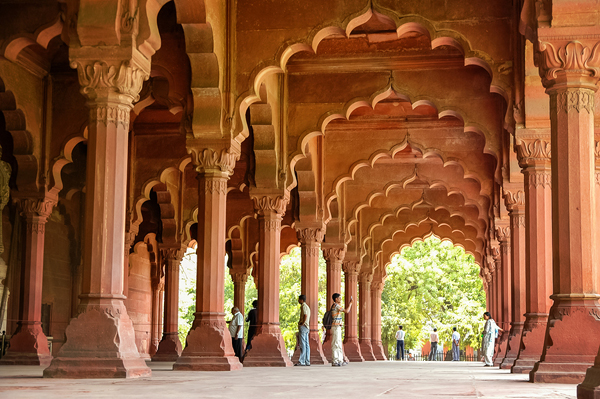Public Transportation in New Delhi
Summary: Learning how to get around using public transportation in New Delhi is an important step in adjusting to life in New Delhi. In this article, we cover the local public transportation options.

Public transportation in New Delhi is a vibrant and bustling system that offers a variety of options for both locals and expats. The city is served by the Delhi Metro, a comprehensive network of buses run by the Delhi Transport Corporation (DTC), auto-rickshaws, cycle rickshaws, e-rickshaws, taxis, and app-based cab services like Uber and Ola. With such a diverse range of public transportation options, it is entirely possible for an expat living in New Delhi to comfortably live without a car, relying on these systems and walking. However, the experience of using public transportation in New Delhi can vary greatly depending on the mode of transport, time of day, and specific route.
Delhi Metro
The Delhi Metro is a rapid transit system serving Delhi and its satellite cities. It is one of the fastest ways to commute around the city and is considered safe for all, including women and children. The metro operates from around 5:30 AM until 11:30 PM, with trains running every few minutes. The cost of a metro ride depends on the distance traveled, but generally ranges from 10 to 60 Indian Rupees. The metro system is well-connected, with eight lines covering over 300 kilometers and more than 200 stations. The Delhi Metro also offers a women-only carriage in every train for the safety and comfort of female passengers.
DTC Buses
The Delhi Transport Corporation (DTC) operates the city's extensive bus network. Buses are a cheap and common mode of transport, with fares ranging from 5 to 15 Rupees depending on the distance. However, buses can be crowded, especially during peak hours, and may not be the most comfortable option for everyone. The DTC also operates a fleet of air-conditioned buses, which offer a more comfortable ride at a slightly higher fare. The bus network covers almost all parts of the city, but can be a bit confusing for newcomers to navigate.
Auto-Rickshaws and Cycle Rickshaws
Auto-rickshaws and cycle rickshaws are a common sight on the streets of New Delhi. These three-wheeled vehicles can navigate through traffic and narrow lanes, making them a convenient option for short distances. Auto-rickshaws are metered, but it's not uncommon for drivers to negotiate fares, especially with foreigners. Cycle rickshaws are human-powered and are often used for short distances in crowded market areas. While these modes of transport offer a unique experience, they may not be the safest or most comfortable option for everyone.
E-Rickshaws
E-rickshaws are a relatively new addition to Delhi's public transportation system. These battery-operated vehicles are eco-friendly and are often used for short distances. E-rickshaws can carry up to four passengers and the fare is usually negotiated before the ride. While they are a cheap and convenient mode of transport, safety can be a concern as e-rickshaws often lack proper safety features.
Taxis and App-Based Cabs
Taxis are available throughout the city, but are not as common as other modes of transport. They are metered, but like auto-rickshaws, drivers often prefer to negotiate fares. App-based cab services like Uber and Ola are widely used in Delhi. They offer a convenient and relatively safe mode of transport, with fares calculated based on distance and time. These services also offer options like carpooling and premium rides.
In conclusion, while public transportation in New Delhi is diverse and widely available, the experience can vary greatly depending on the mode of transport and specific circumstances. It is entirely possible for an expat to live in the city without a car, but it may take some time to navigate and get comfortable with the public transportation system.
About the Author
 Betsy Burlingame is the Founder and President of Expat Exchange and is one of the Founders of Digital Nomad Exchange. She launched Expat Exchange in 1997 as her Master's thesis project at NYU. Prior to Expat Exchange, Betsy worked at AT&T in International
and Mass Market Marketing. She graduated from Ohio Wesleyan University
with a BA in International Business and German.
Betsy Burlingame is the Founder and President of Expat Exchange and is one of the Founders of Digital Nomad Exchange. She launched Expat Exchange in 1997 as her Master's thesis project at NYU. Prior to Expat Exchange, Betsy worked at AT&T in International
and Mass Market Marketing. She graduated from Ohio Wesleyan University
with a BA in International Business and German.
Some of Betsy's articles include 12 Best Places to Live in Portugal, 7 Best Places to Live in Panama and 12 Things to Know Before Moving to the Dominican Republic. Betsy loves to travel and spend time with her family. Connect with Betsy on LinkedIn.
Additional Information:
- Cost of Living in New Delhi
- Health Care in New Delhi
- The Essential Guide to New Delhi
- Healthcare & Health Insurance in India
- Best Places to Live in India
- Real Estate in India
- Pros & Cons of Living in India
- Guide to Residency in India
- Pros and Cons of Living in India 2025
- 2025 Guide to Moving to India



